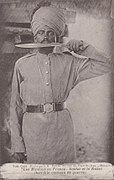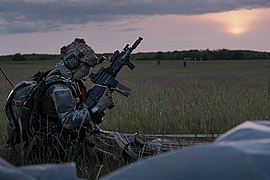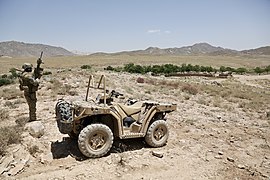Army of Burgundie: Difference between revisions
mNo edit summary Tags: Mobile edit Mobile web edit Advanced mobile edit |
Tags: Mobile edit Mobile web edit Advanced mobile edit |
||
| Line 228: | Line 228: | ||
Rapid Response Brigade is an amphibious armored reconnaissance {{wp|brigade}} headquartered in, Catavis, [[Equitorial Ostiecia]] and serves the Osteician Central Command. | Rapid Response Brigade is an amphibious armored reconnaissance {{wp|brigade}} headquartered in, Catavis, [[Equitorial Ostiecia]] and serves the Osteician Central Command. | ||
===Tirailleurs Tessouat=== | ===Tirailleurs Tessouat=== | ||
[[Algosh_Republic#Algosh_abroad|Algosh]]- The martial tradition of the [[Algosh Republic|Algosh]] has received some outlet in service abroad, leading to a large degree of outmigration of [[Algosh Republic|Algosh]] men, including veterans of the [[Final War of the Deluge]] but also younger men raised in the traditional expectations of [[Algosh Republic|Algosh]] society. Men going abroad for military service typically do so in an extended social regimental unit, with dozens of men arriving together in foreign countries to volunteer for service and eventually settling there together following their service, bringing over any extended family that want to relocate. | |||
== Metropole Forces == | == Metropole Forces == | ||
Revision as of 06:44, 26 April 2024
| Army of Burgundie | |
|---|---|
| Strates della Republique Real Burgundie | |
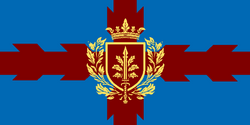 Standard of the Army of Burgundie | |
| Country | |
| Type | Army |
| Role | Land warfare, Expeditionary warfare, Homeland defense, Cyberwarfare |
| Size | 158,099 active, 173,486 reserve, 2.5 million territorial defense personnel |
| Part of | Burgoignesc Security Forces |
| Colors | burgundy and gold |
| Engagements | all of them, (Levantine Creep) |
| Insignia | |
| COA of the Army of Burgundie |  |
The Army of Burgundie (Burg: le Strates della Burgundie), commonly called le Strates, serves as the land-based branch of the Civil Defense and Security Ministry in the Burgoignesc Security Forces in defense of the nation of Burgundie in particular, and The Burgundies in general. It is formed of two sections, the Metropole Forces and the Foreign Legion. The Metropole Forces are not a standing army and as such, is best suited to fourth generation warfare, which is the basic doctrine of force. It relies entirely on small unit tactics and small, fast armored vehicles. This doctrine is born from the bloody origins of the nation, that presupposes that all citizens are soldiers and that massive standing home armies are too expensive for the threat levels that Burgundie has historically encountered. In the modern era this point is render largely moot by the heavy commitments the Army of Burgundie makes to the Levantine Union Defense Council (LUDC) meaning that full time soldiers and officers of the Army are stationed in Burgundie and across the Levantine Union through secondment to cooperative units of the Levantine Union Defense Council. Furthermore, while not a standing army, a 81,538-person reserve force is maintained in the Burgoignesc Metropole, as well as the over 100,000 members of the National Gendarmerie of Burgundie stationed in the same jurisdiction.
On the other hand, the Foreign Legion is a remnant of the Burgoignesc colonial empire and it serves as THE standing army of Burgundie and The Burgundies. While not on combat missions it serves as the garrison force, along with the National Gendarmerie of Burgundie across the Burgoignesc thalattocracy. It is also the primary warfighting force of the Army of Burgundie and focuses its capabilities on expeditionary warfare and long term combat operations sustainment. The Foreign Legion primarily conducts third generation warfare as is typical for armies of the Occidental world. However, due to the asymmetric warfare that the Foreign Legion has engaged in for the last 70 years, it has created entire doctrines and units to embrace fourth and fifth generations of warfare.
Iconography
The coat of arms (COA) and insignia of the Army is an escutcheon with an upper party per fess Gules and a lower Argent with a river in nombril point, with a badge of crossed lance and bill hook or. The Red signifies the high opinion of the blood spilled, the logistical ability of the army to get over any obstacle, and the lance represents the officers and the bill hook the soldiers. The lance recalls the Eques of the lans proviso, the bill hook the various other foot soldiers each man-at-arms would bring to accompany them.
Heritage
The Army of Burgundie's Metropole Forces are rooted in the ideals and concepts of the Adonerii civilization. As such, much of its nomenclature and some of its structure is based in Ancient Latinic terms and organization.
The Army of Burgundie's Foreign Legion is rooted in the history and trappings of the Burgoignesc colonial empire. As such much of its nomeclature and much of its structure is based on the various cultures from which its units were recruited. While all ranks and structures have an official Burgoignesc name, it is more likely that the culturally appropriate term is used amongst Legionnaires and their officers. It is said of the ~50 brigade/regimental level units of the Foreign Legion that there are over 50 different ways to refer to privates, sergeants, and junior officers.
Uniformity is observed in combat uniforms, but dress uniforms vary widely and are left to the unit's commanding officer's Adjunct Historical Officer to maintain based on historical records. It is not required that units wear dress uniforms that are exact to a particular moment in time, it is rather observed that at the brigade/regimental level, uniforms will recall critical elements or items of dress from the units past.
There is a general predilection towards the image of dashing cavalry officers which came to signify the superiority and success of the Burgoigniacs in the First Fratricide. Almost all armored units in the Army of Burgundie carry the mid 19th century designation of their role in their unit name (e.g. heavy armor units are called cuirassiers, light armor units are called hussars, scouting units are called dragoons, and to a certain extent mechanized infantry are called voltieguers).
Mission
The mission of the Army of Burgundie is:
- Preserve the peace and security, and providing for the defense of The Burgundies, and any areas occupied by Burgundie;
- Maintain and prepare against future threats to the sovereignty of Burgundie;
- Implement the national objectives for land forces as determined by the national government of Burgundie; and
- Overcome any nations or parties responsible for aggressive acts that imperil the peace, security, or commerce of The Burgundies.
Strategic doctrine
The Army works to achieve its mission through its strategic approach. The strategic approach is that the army is always prepared to:
- rapidly and with oppressive force, engage all enemies in a prompt, but fully logistically-support fashion;
- wage sustained land and cyber combat against any opponent, anywhere in the world;
- conduct combined arms operations with unified command structures, combat objectives, and communications;
- execute special operations in support of ongoing military operations;
- establish and sustain the theater or area of operations for joint forces operations; and
- liaison, integrate, and fight with valor alongside national, and multinational forces.
Due to almost a century of modern asymmetrical warfare experience, Burgundie has diverged from some of its contemporaries, namely Urcea, whose focus is on peer and near-peer combined arms combat with a focus on massed armor. Burgundie's doctrine focuses on the infantry and engineers and all other corps are designed to support those smaller, agile, rapidly changing mission sets. This means that armored platoons are small (two armored vehicles per platoon) and are empowered to act autonomously in support of infantry in the area.
Tactical approach
Le Strates prepares and expects all of its soldiers, at all levels, to take the initiative and take an adaptive approach to complete orders and meet objectives. It builds its command structure from the highest level to support all levels of maneuver units down to the battalion level. Focus on small formation tactics has led to le Strates to have an outsized and global logistical mechanism to "feed the beast". Because the majority of the army is not in an active-duty status (only the Burgoignesc Foreign Legion is a permanent full-time unit of le Strates), there is not a plodding bureaucracy resistant to change. Le Strates is adaptive to change, and often relies on, and therefore invests in, changes recommended by field-deployed personnel. The survivability of the individual soldier is considered the highest priority in achieving the mission and therefore the soldier's experience is the catalyst for changes in doctrine. However, since the Legion is the only standing element of the Army, it has a massive influence on tactical and strategic thinking.
History
Latinic Armies
Fall of Great Levantia and feudal traditions
Standing Army
In the 14th and early 15th century bands of mercenaries, whose contracts with their masters had expired, were the scourge of medieval Kingdom of Dericania. In the late 1430s, unemployed Derian mercenaries pillaged across southern Dericania. Eventually some were recruited by southern mercenary captains who hired them out to the royal companies raised by order of the local princes, who it seems regarded them as a major impediment to peaceful rule. They extorted protection money from local peasants as well as exacting tolls from passing merchants and holding local important people for ransom.
In 1461 the Bishop of Bonavix passed laws that restricted military recruitment and training to himself. There was a new tax to be raised known as the taille that was to provide funding for a new provincial army. The mercenary companies were given a choice of either joining the provincial army as the maintained one hundred (Burg: les centes manutenures on a permanent basis, or being hunted down and destroyed if they refused. The bishop was able to cobble together one such unit in 1463, which was sent out to gradually eliminate the remaining mercenaries who insisted on operating on their own. The new standing army had a more disciplined and professional approach to warfare than its predecessors. In addition to this unit, the bishops still called upon men-at-arms and footmen by calling a general levy where all able-bodied males age 15 to 60 living in the bishopric were summoned to go to war.
This was the first standing army raised in the principalities that were later unified into Burgundie. Called the maintained one hundred (Burg: les centes manutenures), the unit was at, approximately, a modern company strength, being built around 100 knights (Burg: Eques) and their attendants.
Each lance (Burg: lans proviso for 'contractually obligated lance') contained, six men. The senior member was a man-at-arms (Burg: gens des armes), initially a mercenary captain but eventually a knight owing a knight's fee (Burg: Eques). This man was supported by a squire (Burg: coutillier), usually a younger man still undergoing his apprenticeship to arms, or not yet fully proved in battle. The man-at-arms and squire were further assisted by a page, or (Burg: valiet de guerre), usually a teenage male, who was responsible for caring for their armour, equipment, and horses. The squire was generally fully armoured, and usually charged alongside (or close by) the man-at-arms, and helped him handle the sixteen- to nineteen-foot lance when they fought dismounted (which initially happened fairly often). The lance further contained two archers, who were at first considered mounted infantrymen, provided with horses for mobility alone, but not for battlefield operations. Some were apparently equipped with bows and arrows, others with crossbows, and all also carried swords or axes and some armour, if usually less than the man-at-arms and the squire. As time went on, their role became increasingly difficult to distinguish from that of the other two combat soldiers. By the time of the Great Confessional War, the 'archers' had apparently evolved into armored lancers.
The Bishopric of Bonavix raised and maintained this unit until the end of the Great Confessional War in 1575. The unit was lead by a Sergeant-Captain, usually the bishop, but not exclusively. The success of the unit inspired others to create similar units and by the start of the Great Confessional War, other a third of the combatants maintained standing armies of various sizes.
Buccaneer and colonial warfare culture

- 1625-1835 acts of necessity and decentralization
- Land pirates warfare tactics
- Colonial warfare's policy, strategy, and tactics
small forces relying on shock, mobility, individual initiative, and surprise when massed formations were still the hotness in the Occidental world, reminiscent of modern small unit tactics.
In the early days of the Burgoignesc Colonial Empire the Bergendii were few in number and their military hardware was left over from the Great Confessional War. It wasn't long before their incursions in Alshar and Audonia were met with stiffening resistance from established power players with the military vestiges of the late Oduniyyad Caliphate. Warlords, local strong men, and regional lords who could afford larger armies and fortified defenses were the scourge of the efforts at expansionism under the trappings of set piece Occidental battles. Soon the Bergendii shifted tactics, out of necessity, to make the most of their smaller numbers and increasingly archaic weaponry.
Creating numerous small units of men were specially selected and trained (often by local natives) to participate in sorties and razzia against much more numerous and fortified enemies became a fairly standard practice by Audonian and Alshari based Bergendii colonial governors. These were contemporaneously called the governor's land rovers (Burg: TerreRaubeuers), and were a purely offensive force. These units were never standardized but often shared common themes, they were meritocratic, not restricted by class, race, or creed. These units adopted the weapons of the area in which they operated so that resupply through raiding allowed for long-range raids deep into the enemies interior. Uniforms were eschewed in favor of traditional dress of the area of operations. Due to limitations of communications in the 17th-19th century, governors would give these units general objectives and targets and most importantly a timeframe, but leave it up to the leaders of the units to adjust to the realities on the ground. The timeframe became increasingly important as negotiations would be planned around these timeframes. Treaties or agreements would be stalled until the TerreRaubeuers would return and damage to a new alliance or arrangement after the fact wouldn't occur.
During the collapse of the Burgoignesc Colonial Empire in the 1790s-1830s this practice was reduced and eventually banned when the last of the colonies fell and the various colonial soldieries were consolidated into the Army of Burgundie.
First Fratricide
First Great War
Second Fratricide and Second Great War
Introduction of (Burg: dracvautoureuers, lit. vulture dragoons) paratroopers named after the lunar (Istroyan: hippógypoi) from A True Story, an Istroyan classic satire, and the first known science fiction book.
Operation Kipling
21st Century
Army of Burgundie Force Restructuring Act of 2003
21st Century Burgoignesc Power Projection Stratagem
Organization and Structure
Main article: Structure of the Burgoignesc Army
Structure of the Army of Burgundie (click to enlarge).

Training Command
The training command in the Army of Burgundie is
Standardized Militia Program
Young Burgoigniacs receive their federal conscription orders for training at the age of 18, or after they have completed their high school studies. About two-thirds of the young Burgoigniacs are found suited for military service; for those found unsuited, various forms of alternative federal service exist. Annually, approximately 42,000 persons participate in the militia program which consists of a 3 month basic training period, three 30 day special skills training (sabotage/explosives, amphibious operations, long-range shooting), a two-month tactical decision-making class, a two month review training period, culmination in a month-long exercise. Four week-long leaves are provided as part of the program. Once the "year of service" is completed and voting citizenship is attained, citizens can volunteer to continue their participation in the Standardized Militia Program. Continuing participates receive the following benefits: 100% of the first higher education degree paid for, non-competitive status for federal jobs, a $500 tax break/annum, $10,000 stipend/annum and access to housing programs/preferential lending rates.
Sergeants College of the Army of Burgundie
colloquially called the Homados Corporation (Homados being the personification of the din of battle)
Royal Military Academy
National Military Academy
Cohors Equites Collegium
Staff college, colloquially called the Minerva Institute (Minerva being the goddess of strategy most historically celebrated in Burgundie)
Community College of the Army of Burgundie
Armed Forces University
Foreign Legion
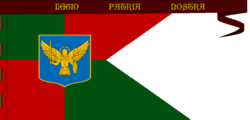

Following the Expulsion of the Protestants from Levantia during the Great Confessional War, Burgundie was flooded with Protestants and a Duke that was hostile to their presence in Burgundie. As an attempt to deal with their persistent presence and under pressure from the Holy Levantine Empire and the Papacy, the Duke of Burgundie, created the Burgundian Foreign Legion as a way to displace them, but bolster his military power. At its conception in 1577, the unit consisted of 1,000 Protestant men with 5 Catholic officers. They were trained as marines and were assigned to merchant ships conducting business outside of Levantia. This role persisted until the late 1800s when the needs of the thalosocrassy shifted and molded the legion to fit.
During the Occupation of Wintergen and Kiravian Pseudo-War and the subsequent occupations of AyerSee, Sodermark and Sturmhavn that permanent garrisons would need to be established to defend the islands. The Legion was re-purposed as amphibious infantry units. Their training consisted primarily of marine skills but added amphibious assault and coastal defense to the repertoire.
Today the Legion consists of ~130,000 members, is still primarily Protestant, is excluded from operating in Levantia, is made up of 65% Burgoignacs and 35% foreigners, and is the only permanent "army" unit in Burgundie.
It is headquartered at Fort LaRemie, Equitorial Ostiecia.
| Name | Command | Role/Composition | Headquarters | Strength |
| I Division, Foreign Legion | Absurian Australis Command | Amphibious Assault Infantry | Sudmoll | Division |
| II Division, Foreign Legion | Osteician Central Command | Airborne Mechanized Infantry | Flordeterra, Equitorial Ostiecia | Division |
| III Division, Foreign Legion | Grand Eastern Command | Airborne Mechanized Infantry | Alcairet | Division |
| Puhkgundian Gorkha Rifles | Grand Eastern Command | Airmobile Light Infantry | Salarive | Division |
| V Division, Foreign Legion | Kilikas Command | Amphibious Assault Infantry | Wintergen | Division |
| Rapid Response Brigade | Osteician Central Command | Amphibious Armored Reconnaissance | Catavis, Equitorial Ostiecia | Brigade |
| TOTAL | ~130,000 |
I Division, Foreign Legion
I Division, Foreign Legion is an amphibious assault infantry division headquartered in, Sudmoll and serves the Absurian Australis Command.
II Division, Foreign Legion
II Division, Foreign Legion is an airborne mechanized infantry division headquartered in, Flordeterra, Equitorial Ostiecia and serves the Osteician Central Command.
III Division, Foreign Legion
III Division, Foreign Legion, sometimes called the Burgoginesc Barsom Army of Ularia, or the Ularien Barsom Army in reference to its predecessor the 10,000 Moukahlas, is an airborne mechanized infantry division headquartered in, Alcairet and serves the Grand Eastern Command.
Puhkgoignesc Gorkha Rifles
-
Gorkha in the uniform of the 1860s
-
Gorkha in the uniform of the First Great War
-
Gorkha in the uniform of the Second Great War
Puhkgoignesc Gorkha Rifles, sometimes called the IV Division, Foreign Legion, is an airmobile light infantry division headquartered in, Salarive and serves the Grand Eastern Command.
V Division, Foreign Legion
I Division, Foreign Legion is an amphibious assault infantry division headquartered in, Wintergen and serves the Kilikas Command.
Rapid Response Brigade
Rapid Response Brigade is an amphibious armored reconnaissance brigade headquartered in, Catavis, Equitorial Ostiecia and serves the Osteician Central Command.
Tirailleurs Tessouat
Algosh- The martial tradition of the Algosh has received some outlet in service abroad, leading to a large degree of outmigration of Algosh men, including veterans of the Final War of the Deluge but also younger men raised in the traditional expectations of Algosh society. Men going abroad for military service typically do so in an extended social regimental unit, with dozens of men arriving together in foreign countries to volunteer for service and eventually settling there together following their service, bringing over any extended family that want to relocate.
Metropole Forces
I Infantry Tacticale

Known as the Esquire's Legion (Burg: tacticale ecuier) the I Infantry Tacticale is now more commonly associated with the higher class of the Burgoignesc military society. Its organization is unique in that it seconds all of its members to the Grand Corps of Civil Engineers of the Nation of Burgundie in times of peace, meaning that its 21,590 soldiers are full-time military professionals while respecting the constitutional and societal concept that Burgundie does not have a standing home army.
Contemporary Units of the I Infantry Tacticale
I Infantry Tacticale History
- HQ and HQ Company
- I Infantry Rgt. (Mechanized infantry)
- III Infantry Rgt. (Mechanized infantry)
- XIV Infantry Rgt. (Mechanized infantry)
- XLVI Mounted Carabiniers Troop
- XVIII Mountain Infantry Rgt.
- III Mountain Artillery Btn.
- VII Mountain Engineer Btn.
- XI Field Supply Coy.
- III Transport Rgt.
Contemporary I Infantry Tacticale History
II Infantry Tacticale

Known as the vavasour's Legion (Burg: tacticale vavasour) the II Infantry Tacticale is a more commonly associated with the working class of the Burgoignesc military society and as such their dress uniform does not include a jacket. Its members are all reservists and are employed by organizations other than the Army of Burgundie.
Contemporary Units of the II Infantry Tacticale
- HQ and HQ Company
- XIX Infantry Rgt. (Airmobile)
- XXXV Infantry Rgt. (Airmobile)
- LXVII Infantry Rgt. (Airmobile Mechanized infantry)
- XLVI Hussar Troop (Airmobile Armored Reconnaissance)
- IV Airmobile Supply Btn.
- II General Support Rgt.
- XII Engineer Btn. (Airmobile)
- III Air Defense Artillery Coy.
II Infantry Tacticale History
Contemporary II Infantry Tacticale History
I Armored Tacticale
Modern combat uniform of the Ist Armored Legion, #dealwithit
Lanciers rouges de la Garde impériale Grenadiers à Cheval de la Garde Impériale Cent-gardes_Squadron
Uniform Gallery
I Armored Tacticale History
Contemporary I Armored Tacticale History
Household Guard
Great Prince's Own Royal Thračician Foot Guard
The Great Prince's Own Royal Thračician Foot Guard is an ethnic Thračician Guard demi-regiment in the direct service of the Great Prince of Burgundie. The Guard is a non-mechanized infantry demi-regiment tasked with the protection of the Great Prince, his family and possessions.
Duke of Burgundie's Guide Sipahis
Great Prince's Own Horse Artillery
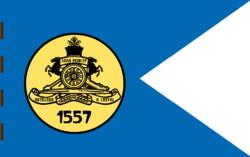
First formed in 1557, the unit that is now the Great Prince's Own Horse Artillery (Burg: Artillerie a Cheval della Gran Princep), has a long history of excellence. Due to the nature of warfare prior to the Great Confessional War in Levantia (1555 - 1575), most principalities and duchies did not have standing armies. This meant that they did not have training programs and so when men-at-arms (Burg: gendarmes) and their peasant levies were called to action they could only provide a limited scope of rudimentary battle tactics. The introduction of gunpowder to Levantine warfare in the 15th century was assumed to begin a revolution in warfare. However, outside of sieges and castle/fortification defense, these bombards were determined to be too immobile and unreliable for set-piece battles. They were only used by well-resourced, large armies controlled by kings or those armies raised by the Emperor of the Levantines.
The use of the word "cannon" marks the introduction in the 15th century of a dedicated field carriage with axle, trail and animal-drawn limber—this produced mobile field pieces that could move and support an army in action, rather than being found only in the siege and static defenses. The reduction in the size of the barrel was due to improvements in both iron technology and gunpowder manufacture, while the development of trunnions—projections at the side of the cannon as an integral part of the cast—allowed the barrel to be fixed to a more movable base, and also made raising or lowering the barrel much easier. These innovations allowed for the more widespread use of cannons but added the requirement for trained, professional soldiers and logisticians. Artillery was one of the areas requiring the most training to be conducted consistently and with any real effect. As such artillery companies were among the first professional standing army units to be formed in Levantia. In the coastal areas of the Kingdom of Dericania this was first recorded in the first few years of the Great Confessional War when the need for an organic (not mercenary) corps of artillery was realized by some of the armies on both sides. Few dukes, counts, and lesser princes, could afford a permanent military much less the specialized equipment that went along with artillery batteries. However, the Vilauristre Conference (Protestant) and the Duchy of Marialanus (Catholic) were wealthy merchant states with trade routes and thus direct access to the metallurgists who had served the Oduniyyad Caliphate until its collapse in 1517.
These gunsmiths were brought to Vilauristre Conference and the Duchy of Marialanus and grand manufactories for cannons and later early musketry were formed, these wares were not only produced for the armies of these states but for their allies. The Vilauristre Conference created predominantly iron cannons for the Protestant Union and the Duchy of Marialanus created primarily bronze cannons for the Holy League.

The Duke of Marialanus formed the Company of Cannoneers in 1557 with three cannons. It is from this Company of Cannoneers that the Artillerie a Cheval della Gran Princep draws its heritage. During the Burgoignesc Unification War, more widely called the Second Fratricide, the Ducal Corps of Artillery fought with honor against the Principality of Burgundie, but ultimately the Duchy lost and was subsumed into the new nation of Burgundie. The unit was disbanded from 1875-1896 when it was reformed as the 4th Regiment of Horse Artillery, to fight in the First Great War. They served in the War of Faskano Strait with distinction despite staggering loses and were. At the end of the war when the Metropole Forces were being disbanded again, to honor their service and sacrifice they were reorganized as the Artillerie a Cheval della Gran Princep and made a permanent bodyguard unit for the royal family.
They currently use the CAESAR NG self-propelled howitzer and a variety of mortars when in combat.
Fire Seneschalcy

Main article: Fire Seneschalcy of Burgundie
The Fire Seneschalcy of Burgundie is the unit of the Army of Burgundie that exercises the following coordinating authority in Burgoignesc territory:
- multi-jurisdictional fires
- fire safety and preparedness
- fire safety inspections of government buildings
- fire fighting for "critical infrastructure" and military bases
Legion of Volunteers and Levies
Since the Metropole Forces are not a standing army it requires a series of reserves to maintain their skills in the event that they are needed. Burgundie achieves this one three levels. The LUDC, the Metropolitan Guard, and the Princess Royal's Volunteers.
Levantine Union Defense Council as a reserve force
The Levantine Union Defense Council (LUDC), of which Burgundie is a co-founding member, provides a convenient loophole to the legal statute preventing Burgundie from having a standing army in the Burgoignesc Metropole. Burgundie provides a disproportionate amount of personnel support to the LUDC's Mobile Land Forces Element. By subjugating command and control of these units to the LUDC and not a Burgoignesc command, they are considered not a national standing army, but supernational-interagency combat units. This creates a thriving environment for soldiers and commander to train and gain valuable experience while also ensuring that the majority of the Army of Burgundie is capable of engaging in international operations and understanding complex and dynamic command environments.
Metropolitan Guard

The Burgoignesc Grand Principal Republican Metropolitan Guard, (Burg: Vigilanteuers della Republique Real Burgoignesc), more commonly known as the Metropolitan Guard, is the ready-reserve infantry force of the Army of Burgundie. It constitutes a semi-professional corps of non-commissioned and junior officers. It is designed to be activated in the event of an invasion of the Burgoignesc Metropole and to rally residents to fight a guerilla war against the invaders.
Princess Royal's Volunteers
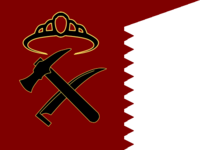
The Princess Royal's Volunteers is a civilian self-defense league operated under the leadership of the army but regulated on a day-to-day basis by the National Gendarmerie of Burgundie. It is an inactive reserve force for the Army of Burgundie and has a membership of about 1.7 million. Sometimes called the Peasant's Army, the Membership is a prerequisite for fire arms ownership in Burgundie. Upon completion of the application process and 40 hrs of firearms safety training, residents are given a license to buy, own, and where permissable by local law, carry firearms. There are no dues, and members are automatically rostered with the Princess Royal's Alshars. This designation means that in the event of a national emergency or war members are forbade from leaving the country and subject to conscription. To maintain membership residents have to complete 4 hours of subervised range time each month, and one combat village course each year.
Cooperative Units
Arcer-Burgoignesc Joint Regiment-of-Foot
Burgo-Paulstran Cooperative Brigade
LUDC
Bulkhan-Burgoginesc Legion
Burgo-Yonderrian Retinue Militaire
Primarily a training and logistics body to ensure Burgs and Yonds are on the same page in case I go to war and want to draft the entire country of Yonderre]....again, so they are up to speed on Burg weapons and tactics. This is "unofficially" considered the Burgoignesc Foreign Legion's induction center for Volonderres.
Cohort Praetorian of the Great Levantines
=
Other Commands
Army Special Services Command
Army Interdiction Forces
CBRNE Response Directorate
Electronic and Signals Warefare Operations
Cyberwarfare Directorate
Industrial Maintenance Service
Army Corps of the Rails
The Army Corps of the Rails (Burg: Corps Strates della Rueferrus (CoStR)) was formed during the Second Great War when the various private freight rail networks were nationalized as part of the total war campaign in 1939. In its current iteration it owns, maintains, or operates on about 15% of the rail network in Burgundie and has a rolling stock capacity of 568 cars of various descriptions, 47 engines, and three yards.
Ancient and Honorable Logistics Train
The Ancient and Honorable Logistics Train (Burg: Train Logistique Ancien et Honourable (TraLAH)) is a collection of company level pack animal troupes for combat logistics in environments and theaters where terrain or refueling capabilities are complex. There are 8 mule companies, 6 dromedary companies, 4 horse companies, and a dog sled company.
Each company consists of a headquarters, a veterinarian platoon, a feed and handling platoon, and 10 squads of two animals each, with the exception of the dog sled company which has 5 squads each with a sled and 8 dogs.
The future is analog, you heard it here first.
Overseas Enemy Arms Repurposement Sustainment Brigade

The Overseas Enemy Arms Repurposement Sustainment Brigade (Burg: L'Outremer Brigade Sustenement pour le Reutilisement des Armes Ennemi (OBSRAE)) is a brigade-strength combined-capabilities logistics and engineering unit tasked with the rehabilitation of captured arms from opposition forces to reduce the logistical requirements on units of the Army of Burgundie. The OBSRAE is composed of two motor pool/mechanics battalions to reconstitute enemy ground vehicles, one aviation maintenance battalion, a small arms repair battalion, a research/evaluation/training battalion, and a brigade support battalion.
While it follows a standard brigade structure, the battalions are all capable of operating independently down to the company level and are often combined to fit the specific needs of the Army of Burgundie's deployed formations. The OBSRAE can be requested by any general officer on the recommendation of a field-grade officer, with a justification. The OBSRAE's headquarters unit includes a Resource Allocation and Adjudication Company which is focused on ensuring that the Brigade's elements are able to meet all requests and are deployed efficiently.
The headquarters unit also includes a Brigade HQ/HQ Company, a Network Support Company, an independent Engineer Company, and a Site Security Infantry Company.
Operational history
The concept of repurposing captured enemy weapons (Burg: repurposement) has long been practiced during longer campaigns, particularly in theaters of operations far away from the Burgoignesc Metropole. A similar strategy, Prize have been conducted by navies for centuries, and has, since prior to its unification, been central to Burgoignesc martial maritime culture. Its use on land was not formalized until late in the Second Great War at which point Burgundie's army was spread across the globe and its logistics capabilities were strained to their breaking point. Units were asked to live off of the land and utilize captured equipment where possible so as to reduce the demand on the materiel supply chain. There was measured success but not enough to reduce demand and at the end of the war the mechanisms in place were disbanded.
During Operation Kipling the cultural revolution at home and the resulting opposition the war and the military-industrial complex led to a similar supply chain problem. Some lieutenants whose squads were in particularly hard to supply areas took it upon themselves to train their soldiers on the use of enemy weapons (particularly small arms) and supplemented their ability to sustain fires with captured enemy munitions. As the war expanded this percolated up to the field-grade officers who began not only to increase the formality and investment in this capability but also to develop specialized recon missions to capture, instead of destroying, enemy weapons in remote areas of operations (AOs). This required specialized training, not only for general forces but also of the units conducting the recon missions. This request for supplemental training reached back to Army headquarters in the lat 1970s and the Standardized Militia Progam was reworked to include training on the main battle rifle of the Army of Burgundie, but also the primary weapons of the top three adversaries of Burgundie at that time. This program was scrapped in the mid 80s as ineffectual but it was added to the advanced infantry schools of the Metropole Forces and the Burgoignesc Foreign Legion and increased to the top 5 rifle/assault rifle platforms.
In 2012, L'Outremer Brigade Sustenement pour le Reutilisement des Armes Ennemi (OBSRAE)) was formed to increase the repurposement capability beyond small arms and include land-based vehicles. A supplemental "Adversarial Platform Familiarization and Industrial Strategy" course was added for maintenance personnel and vehicle crews so that they could, theoretically, get into any vehicle in the world (regardless of the labeling language on the instrumentation) and understand it enough to drive it to a secure area to be repurposed by friendly forces. Once in a secure location these vehicles are remanded to the OBSRAE for repurposement.
In 2018, OBSRAE was expanded to include an aviation maintenance battalion. To date the battalion is only tasked with repurposement of rotary-wing and small fixed-wing support airframes. The capability to effectively repurpose larger attack, interceptor, and bomber aircraft, while feasible, cannot be met with enough trained fighter/bomber pilots, so it has been deemed inefficacious.
Since its formation in 2012, OBSRAE has been deployed 48 times for an average of 6 months. It has reduced the demand on the Burgoignesc materiel supply chain by:
- 42 million rounds of small arms ammunition
- 2.3 million small arms (battle rifles, assualt rifles, submachine guns, and pistols)
- 249 light, general purpose, and/or medium machine guns
- 4,942 heavy weapons systems (heavy machine guns, grenade launchers, anti-material/tank rifles)
- 630 single-use anti-tank rocket/missile systems
- 349 reusable anti-tank rocket/missile systems
- 4,593 anti-tank rockets/missiles
- 39 anti-aircraft missile systems
- 82 anti-aircraft missiles
- 3 main battle tanks
- 183 infantry fighting vehicles
- 49 armored personnel carriers
- 15 fuel trucks
- 29 armored engineer vehicles
- 3 tank recovery vehicles
- 295 unarmored support vehicles
- 4 attack helicopters
- 2 medium transport helicopters
- 6 small transport helicopters
- 3 small transport aircraft
- 1 gunship/counter-insurgency aircraft
- 1 antique staff car
Personnel
Bases
Equipment
Main article: Modern equipment and uniform of the Army of Burgundie
- Pace sticks for NCOs
- Swagger sticks for infantry and riding crops for cavalry Junior Officers
- Vine staff or Shillelaghs for all Senior Officers (Senior Officers of Istroyo-Latinic ethnicity prefer the vine staff. Those of the Gaelo-Levantine line prefer the shillelagh. Either one is provided by the Army upon commissioning as a Lt. Colonel)
- Batons for all Staff Officers
Army Flag

Notable Soldiers
| Name | Country of Origin | Country(ies) of Service | Lifespan | Contribution | Notes | |
|---|---|---|---|---|---|---|
| Caphiria | Caphiria | Duchy of Marialanus | 1452–1519 | |||
| Free City of Granblaix | Bishopric of Bonavix | 1743-1831 | ||||
| Oilliem-Alliander Fremand Ouitan | Burgundie | Burgundie | 1914-1967 | In 1932, he began publishing paperback books for soldiers in his unit small enough to fit in uniform pockets. By 1935, this lead to the Army sponsoring a massive paperback publishing effort which continued the world over after the war. | ||
- Vocivine National of Burgundie
- Navy of Burgundie
- Royal Air Service of Burgundie
- Burgoignesc Security Forces
- Ranks in the Burgoignesc Security Forces
- Levantine Union Defense Council

